
Pacific Island Countries and Areas
Pacific Island Countries and Areas
Context
Pacific Island Countries and Areas (PICs) account for 21 islands, all of which are vulnerable to emerging and re-emerging infectious diseases, food and water insecurity and natural hazards exacerbated by climate change. One of the biggest challenges for people in the Pacific is accessing health services during emergency situations such as the COVID-19 pandemic, due to the long travel time to the main islands where relatively good health care services are available. To minimize the impact of health insecurity in the region, WHO provides technical and operational support to the Pacific countries to assess, prioritize, implement and fund sustainable national and regional health security capacity required under the International Health Regulations (IHR) 2005.
As of 15 September 2022, approximately 400 000 confirmed COVID-19 cases and 2 600 COVID-19-related deaths had been reported in PICs. Countries have struggled to procure COVID-19 supplies independently from global suppliers given their low purchasing power and remote location. Beyond COVID-19, PICs have confirmed two mpox cases as of 15 September 2022. Additionally, the region is also prone to natural disasters such as floods, cyclones and volcanic eruptions that interrupt health service provision at any time. WHO takes the lead and collaborates with other UN agencies and partners in the region to respond to the health emergency needs of PICs. Four of the 21 PICs have experienced high water shortages due to low rainfall and dry weather. On 11 June 2022, Kiribati declared a state of emergency to manage and respond to the drought while other countries have not yet declared a state of emergency as of 30 September 2022.
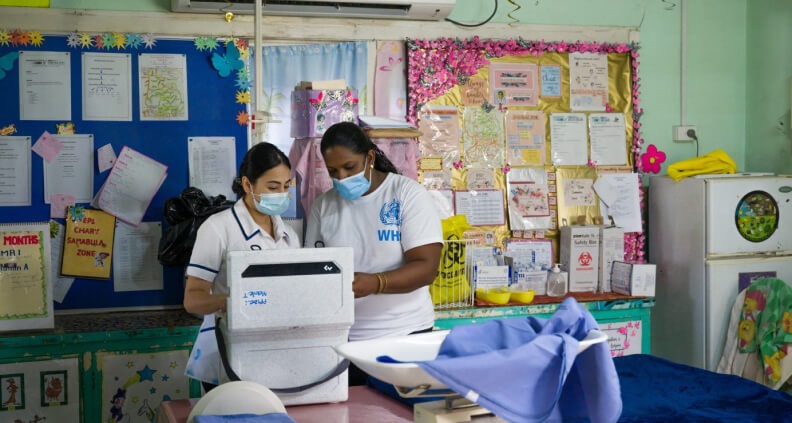
Nurse Sonam Lata and WHO immunization officer for the COVID-19 vaccination program, Sagita Devi at Samabula Health Centre checking the vaccines to be administered at a school nearby.
Emergency response
WHO’s Division of Pacific Technical Support (DPS) incident management team (IMT) supports PICs with their preparedness, readiness and response to public health emergencies to prevent a surge in cases in the health system at the national, sub-national and outer island levels. WHO’s emergency response follows a pillar-based strategy mainly focusing on risk communication and community engagement (RCCE), coordination of partners through joint IMT, surveillance, case investigation and contact tracing, diagnostics and testing, infection prevention and control, case management and therapeutics, operational support and logistics and vaccination.
WHO DPS collaborates with other UN agencies and partners for the public health emergency response, including the World Food Programme (WFP) for operational support and logistics.
WHO also leads the COVID-19 response in the region, supported by the United Nations International Children’s Fund (UNICEF) on Risk Communication and Community Engagement (RCCE) and access to COVID-19 therapeutics and vaccines. As of 15 September 2022, WHO, together with multiple donors and partners, have provided more than 13 million personal protective equipment (PPE) items, 1.7 million laboratory supplies, 238 516 pieces of medical equipment and 718 820 therapeutics and treatments to support the COVID-19 response in the Pacific. WHO and partners were able to deliver those items in the presence of unique logistical and operational constraints in the region. The low purchasing power of small island nations means PICs struggle to procure supplies from global vendors. The lead time of the procurement process, competition for limited suppliers and undertaking small orders make the logistics and operations more cumbersome and lead to high costs. Due to the remote nature of locations, supplies are shipped to airstrips that are not suited for large aircraft, temperature-controlled supplies must be flown in on small crafts and bulky supplies must be transported by boat, creating significant lead times for cargo to reach countries in a timely manner.
Strategic objectives
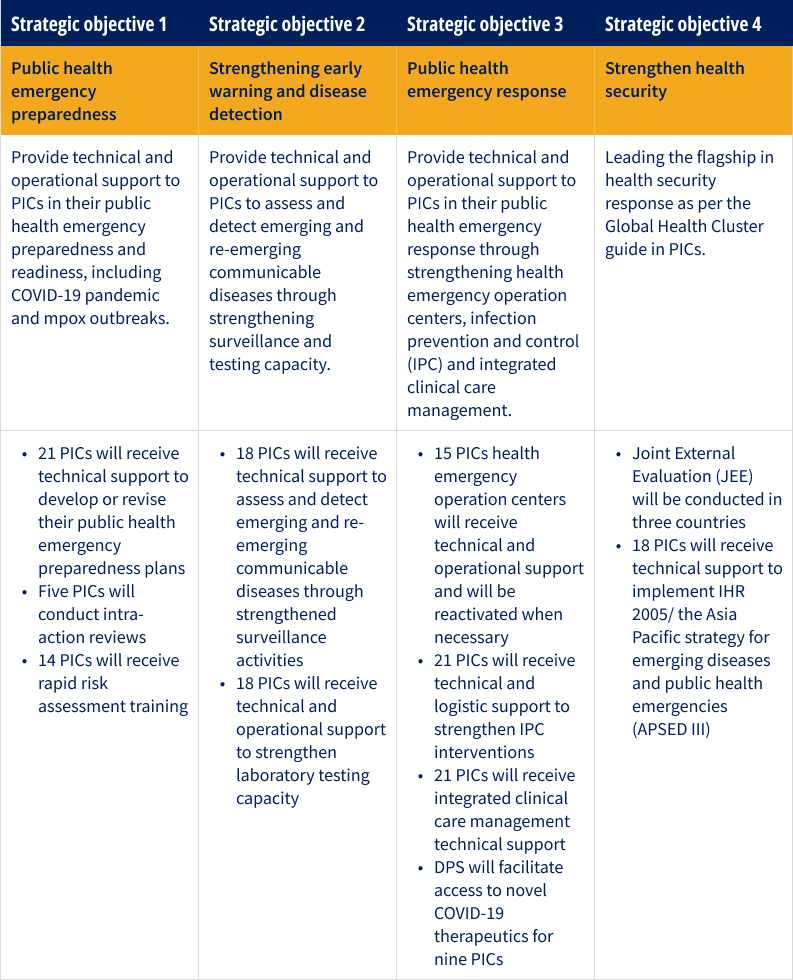

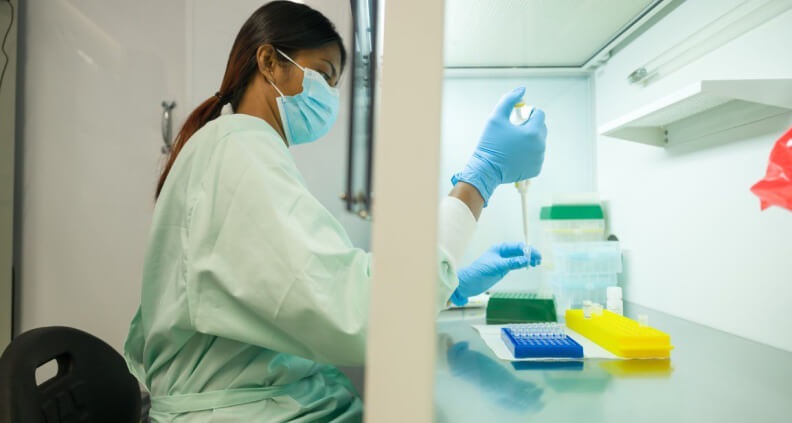
Dhanbhagium Goundar conducting COVID-19 PCR tests at the Fiji CDC National Public Health Laboratory in Nadi.
Key activities
- Provision of technical support by engaging experts on RCCE, diagnostic, surveillance and epidemic response, clinical care management and vaccination
- Facilitate and distribute supplies and equipment needed for emergency responses, such as IPC/PPE items, testing supplies and equipment for pandemic and epidemic diseases and therapeutics and treatments to support clinical care management
- Develop and distribute country-specific information, education and communication materials through a social listening mechanism, to increase community awareness and safety practices during public health emergency events
- Provision of continuous training, webinars, supportive supervision and mentoring to local health care providers, ensuring knowledge transfer and strengthening of the existing health system
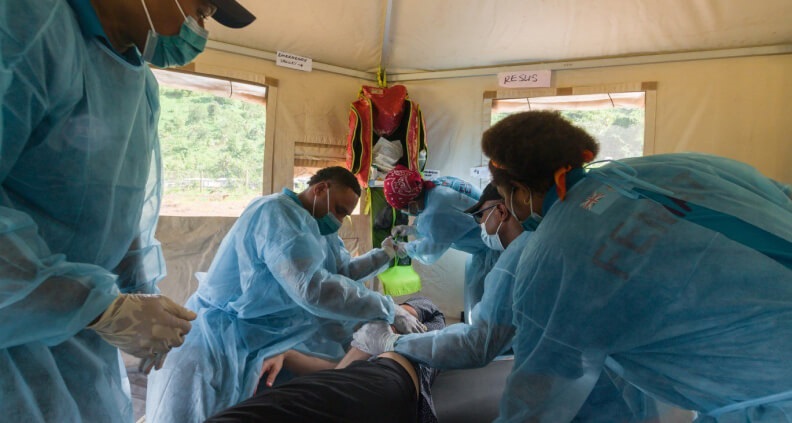
Funding requirements (US$’000)
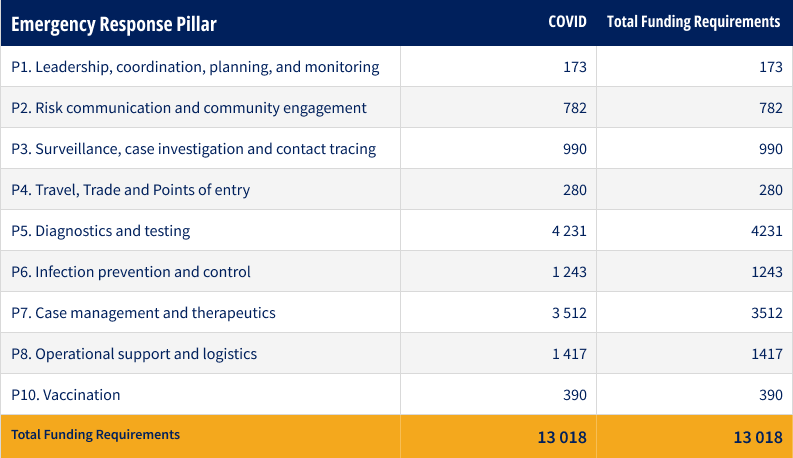

Success stories
Preparedness pays off in response to the volcanic eruption in Tonga
- At approximately 5:30 pm local time on 15 January 2022, the Hunga Tonga-Hunga Ha’apai volcano erupted, spewing forth a 20 km high ash plume. The eruption was the largest volcanic eruption in Tonga in the last 30 years and could be heard in Australia and New Zealand, leading to the issuance of tsunami alerts around the Pacific. WHO supported the Tonga Emergency Medical Assistance Team (TEMAT) in preparing for its immediate deployment to the Ha’apai islands – the worst-affected area – to help treat people with injuries, provide psychosocial support and distribute relief items such as water, food and tents.
- WHO played a central role in supporting the Ministry of Health in establishing TEMAT through the provision of training for the team and the prepositioning of supplies. WHO also provided the team with first aid kits, tents, portable toilets, water filtration systems and other items that will enable TEMAT rapid deployment in emergencies. A total of 28 TEMAT members were deployed to provide emergency care to 381 patients.
- WHO actively supports the establishment, training and provisioning of emergency medical teams like TEMAT across the Pacific. Teams already trained and ready to be deployed include those in the Cook Islands, Fiji, the Commonwealth of the Northern Mariana Islands, Palau, the Solomon Islands and Vanuatu. Several of these teams have played a vital role in their national COVID-19 responses. Having this capacity available in-country means that Pacific Island nations are better prepared to face future emergencies – whether for a volcanic eruption, cyclone, or pandemic.
For more information
Dr. Nuha Mahmoud | Team Coordinator | Pacific Health Security & Communicable Diseases (PSC) | WHO
Division of Pacific Technical Support | hamidn@who.int
Biniam Getachew Kabethymer | Health Security Program Manager | WHO Division of Pacific Technical Support | kabethymerb@who.int

